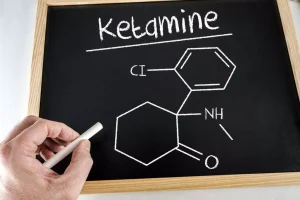Alcohol withdrawal timeline: Symptoms and more

Here, you can fully focus on long-term recovery from addiction, engaging in therapy, support groups and other forms of treatment to bring about lasting results. Alcohol withdrawal syndrome is most accurately diagnosed by a doctor who asks a person about their medical history and symptoms, followed by conducting a physical exam, says Farrell. A doctor may also perform a toxicology screening, which can be used to determine how much alcohol is present in the body. The brain, which has become accustomed to the sedating effects of alcohol, starts to react by sending signals of distress.
Severe Depression: The Red Flags to Watch For
- The peak symptoms of alcohol withdrawal can be overwhelming and distressing.
- “Today, I went to the grocery store, and I cannot believe how clear everything is getting. It’s amazing how foggy life was.”
- In many cases, the side of effects of alcohol withdrawal can resolve within two to five days after your last drink.
Although drinking alcohol is a common way to unwind and meet new people, it can also have effects that go beyond its appeal. For many people, giving up alcohol is a step in the right direction toward a healthier lifestyle. If you’re experiencing intense withdrawal symptoms, individual or group therapy is a fantastic option that we strongly recommend. Having people with first-hand knowledge to talk to will help put things into perspective and motivate you to keep going. While acute withdrawal symptoms generally resolve in a few weeks, PAWS symptoms can last for a few months or up to a year.
Addiction, Recovery, and PAWS

Patients with mild to moderate withdrawal symptoms without additional risk factors for developing severe or complicated withdrawal should be treated as outpatients when possible. Ambulatory withdrawal treatment should include supportive care and pharmacotherapy as appropriate. Benzodiazepines are first-line therapy for moderate to severe symptoms, with carbamazepine and gabapentin as potential adjunctive or alternative therapies.
Stage Three of Alcohol Withdrawal
A healthcare provider can prescribe medications that can help you manage symptoms such as shakes, anxiety, and insomnia. Those who sought help from their healthcare providers and were given medications to alleviate their symptoms reported milder, shorter-lived symptoms overall than those who quit on their own. Severe and complicated alcohol withdrawal requires treatment in a hospital — sometimes in the ICU.
Medical Interventions for Alcohol Withdrawal
- Most of those who experience severe alcohol withdrawal symptoms do so because they’re going through their detoxification period “on their own” without the benefit of medical help.
- Chronic alcohol abusers frequently need in-patient treatment to safely manage the physical and emotional effects of years of abuse.
- It is estimated that only 20% of alcoholics can stop drinking alcohol permanently without the help of a treatment program such as Alcoholics Anonymous.
- Stopping alcohol, however, can make healing possible that would not be otherwise.
Some long-term drinkers can also develop nutritional deficiencies that lead to brain damage. If someone develops these signs, call 911 and tell the operator about what you’re seeing. Stay with the person until help arrives, and follow the operator’s instructions. While some people may be concerned about headaches, they are a completely normal side effect and may last up to a year.

We offer individualized, extended-term treatment in an intimate setting.
However, when alcohol is removed from the equation, these individuals may find themselves facing intensified mental health symptoms alongside withdrawal symptoms. For example, individuals who are in good physical health and have a balanced diet may experience a faster recovery compared to those who have underlying health conditions or poor nutritional status. Adequate nutrition is essential during the withdrawal process as it provides the body with the necessary nutrients to repair and restore its functioning. Alcohol withdrawal can be a challenging and uncomfortable experience for individuals who have developed a dependence on alcohol. It is important to recognize that alcohol withdrawal is a serious medical condition that should be monitored and treated by healthcare professionals.
Because the brain reduces its output of GABA while a person is consuming high amounts of alcohol, suddenly not drinking leaves the brain with a shortage of this calm-inducing chemical. If you or a loved one drinks heavily or has an alcohol use disorder (AUD), it can be dangerous to go through the withdrawal process alone. Below, the three stages are broken down into an alcohol withdrawal timeline. Your symptoms may simply be uncomfortable or can be medically significant and require care. The cravings and the urge to drink do not suddenly disappear after 30 days of abstinence. Quitting drinking, even without making other changes, can help you return to better physical health, but regaining emotional and psychological balance can be challenging.
Am I drinking too much? Signs of a drinking problem
The type of drug you were taking, the amount of time https://ecosoberhouse.com/ you were taking it, and the dosage you were taking can all affect the type and severity of the symptoms you experience. Tracking your triggers, managing stress, and taking care of your basic needs might help keep your symptoms in control. Therapy and support groups can help you cope with the mental and physical stress of PAWS. However, you could reduce your risk of dangerous and uncomfortable withdrawal symptoms by seeking medical help instead of quitting cold turkey or adjusting your medication on your own.
Alcohol Withdrawal Timeline: How Long Does Each Stage Last?
The available research suggests that some symptoms of opioid-related PAWS can last for alcohol withdrawal syndrome symptoms weeks, and in some cases, 6 to 9 months after last use. According to the research, these symptoms can endure weeks or even months after discontinuing use. This, as well as impulse control disorders, can last up to 4 weeks after discontinuing use. Alcohol enhances the function of an amino acid called GABA, which helps the brain stay calm.
- The main ways to prevent alcohol withdrawal are to avoid alcohol altogether or to get professional help as soon as possible if you think you’re developing alcohol use disorder.
- Heavy alcohol use is expensive, potentially costing you $800 each month or even more.
- The type of drug you were taking, the amount of time you were taking it, and the dosage you were taking can all affect the type and severity of the symptoms you experience.
- When going through alcohol withdrawal syndrome, people will often be dehydrated due to diarrhea or vomiting.

While any scarring caused by liver inflammation (called cirrhosis) will be permanent, the effects of inflammation itself will be almost completely resolved by week four. The dehydrating effect of alcohol affects your skin and your hair significantly. As you have four weeks of better hydration, improved sleep and better overall health, it will noticeably affect your skin and hair. If your alcohol use distracted you from skin and hair hygiene, then the effects of sobriety can be even greater. After four weeks of hair growth without the effects of alcohol, your hair may appear fuller and more supple.
